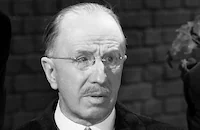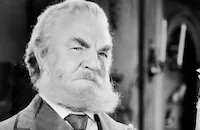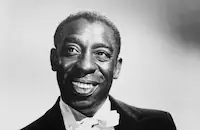Washington Merry-Go-Round

Brief Synopsis
Cast & Crew
James Cruze
Lee Tracy
Constance Cummings
Walter Connolly
Alan Dinehart
Arthur Vinton
Film Details
Technical Specs

Synopsis
Onboard the Congressional Express, a train bound for Washington, D.C., is the Honorable Button Gwinnett Brown, a newly elected member of the United States House of Representatives. Button looks at an original letter from his ancestor, Button Gwinnett, one of the signers of the Declaration of Independence, but the letter blows into the compartment of Alice Wylie, the granddaughter of an influential senator, who promptly tears it up as trash. Button is dismayed because the document was one of only three surviving letters written by his namesake. Meanwhile, Carl Tilden, head of the prohibition department, visits bootlegger Edward T. Norton. Tilden threatens to expose Norton and resign, but Norton reminds Tilden of his power and adds that Tilden can expect a term in Leavenworth. Tilden leaves and writes a letter to his friend Button, then kills himself. When Button arrives at the depot, he is met by Willis, who has been appointed as his secretary by the local boss, Kelleher, an associate of Norton. Willis carries a telegram that orders Button to vote for a bill that would ensure a permanent place for the relics of General Digger, but Button, intent on political integrity, rejects Willis' proposal. On the steps of the Capitol, Button meets his old pal Pete, and together they visit the Bonus Army. Button lectures the group on political corruption and explains that he has learned that he was elected with stolen votes and now plans to double-cross the crooks who put him there. Button returns to his apartment and, after putting Kelleher in his place, reads Tilden's letter. Button then goes to the Library of Congress to research the Digger bill and discovers that it is a fraudulent bill meant to honor a man who stole land from the native American Indians. Button meets with Alice, who after agreeing to work for him, tells him that Kelleher is having the ballots recounted to recall Button from office. On the floor of the House, Button exposes the Digger bill. After being removed from office, Button is counseled by Alice's grandfather, Senator Wylie, whom Button accuses of being controlled by Norton. At first denying Buttons' allegations, Wylie soon recognizes that Button is right, but before he can mount an investigation, he is poisoned by his chief aide, Martin, a Norton spy. At Wylie's funeral, Alice is accompanied by Norton, who proposes marriage and outlines his plan to gain control of the nation's newspapers and political machines. Button exposes Norton's scheme to the Bonus Army, and they capture Norton, who is charged with the murder of Tilden, Wylie and the United States Marines who were killed in Latin America while defending his crooked financial interests. Norton futilely attempts to bribe Button, who leaves Norton a gun, with which he kills himself. As they leave, Alice asks Button to put his arm around her.

Director
James Cruze
Cast

Lee Tracy

Constance Cummings

Walter Connolly

Alan Dinehart
Arthur Vinton

Arthur Hoyt

Burton Churchill
Frank Sheridan

Clay Clement

Clarence Muse
Sam Godfrey
Ernest Wood
Crew

Film Details
Technical Specs

Articles
Washington Merry-Go-Round
All that being said, there doesn't seem to be any evidence that the later film was actually spawned by the earlier one. The writing credits of Mr. Smith make no reference to Washington Merry-Go-Round's screenplay or source material (though they also don't reference the novel The Gentleman from Montana, which is where the idea for Mr. Smith sprang from).
Washington Merry-Go-Round's source material actually provided nothing more than a title and some general inspiration. In 1931, newspaper reporters Drew Pearson and Robert S. Allen published an anonymous book entitled Washington Merry-Go-Round, which was a gossipy exposé of politicians and other public figures in the news. The book was successful enough to bring forth a sequel, More Merry-Go-Round. Soon thereafter, Pearson started a newspaper column called "Washington Merry-Go-Round," which quickly became widely syndicated, influential and notorious. He also hosted a radio show of the same name. Over the following decades Pearson developed into one of the era's most widely known pundits, both admired and reviled for exposing corruption and graft in the halls of Congress and public institutions. He was both showman and newsman, and in later years he created television programs which were the precursors of shows like Meet the Press.
This movie was produced following the publication of Pearson's two books and around the time his original newspaper column began. The title was certainly fresh enough in the public discourse to tell audiences that the film would probably address political corruption. Columbia Pictures bought the rights to the title and commissioned a fictional story of Congressman Button Gwinnett Brown, who draws the ire of his crooked colleagues to the extent that they trump up a recount to try and unseat him. The character's name comes from real-life Button Gwinnett, one of the signers of the Declaration of Independence.
Directed by James Cruze (The Covered Wagon, 1923), the film was well-received, with The New York Times calling it "a sturdy piece of work with melodramatic interludes" and praising the "excellent performances." Look for Jane Darwell in a small role, eight years before she won her Oscar® for The Grapes of Wrath (1940).
Producer: Walter Wanger
Director: James Cruze
Screenplay: Jo Swerling; Maxwell Anderson (story)
Cinematography: Ira Morgan, Ted Tetzlaff
Film Editing: Richard Cahoon
Cast: Lee Tracy (Button Gwinett Brown), Constance Cummings (Alice Wylie), Walter Connolly (Senator Wylie), Alan Dinehart (Edward T. Norton), Arthur Vinton (Beef Brannigan), Arthur Hoyt (Willis), Berton Churchill (Speaker of the House), Frank Sheridan (John Kelleher), Clay Clement (Ambassador Conti), Clarence Muse (Clarence).
BW-79m.
by Jeremy Arnold

Washington Merry-Go-Round
Quotes
Trivia
Notes
The onscreen credits are followed by a quote from James Truslow Adams's The Epic of America: "If the American dream is to come true and to abide with us, it will, at bottom, depend on the people themselves." Button Gwinnett was a delegate from Georgia who signed the Declaration of Independence. According to New York Times, Columbia bought the screen rights to only the title of the Robert Sharon Allen-Drew Pearson best seller, and hired Maxwell Anderson to write a fictionalized story to accompany the title. Although a Hollywood Reporter production chart credits technical advisor Eugene Thackeray (and Anderson) with screenplay, Thackery's contribution to the final script has not been confirmed. Drew Pearson was an influential columnist for the Baltimore Sun when he co-write the book Washington Merry-Go-Round, a controversial political expose. Subsequent to the book's publication, Pearson was fired from the Sun. He went on to co-write with Allen a nationally syndicated column under the book's title until 1942, and subsequently wrote it for many years alone or in collaboration with other writers.














